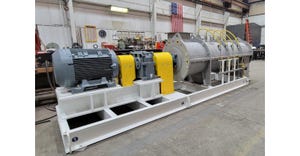March 21, 2011
The Association of American Railroads (AAR) announced that 2010 was the safest year in U.S. Class I freight railroad history, with preliminary year-end data indicating the industry’s train accident and employee casualty rates both were at record low levels.
The safety data, which is released by the Federal Railroad Administration (FRA), shows that the total number of train accidents involving U.S. Class I freight railroads declined by 3 percent in 2010, with the rate per-million-train-miles falling 9.6 percent from the previous record established in 2009. The number of employee casualties on U.S. Class I freight railroads fell by 14.2 percent, while the employee casualty rate measured per-hundred full-time equivalent employees declined 16 percent from the previous record set in 2009.
"These safety accomplishments demonstrate the depth of the freight railroad industry's commitment to the safety of our employees, the communities we serve and the country's rail network infrastructure," said AAR president and CEO Edward R. Hamberger. “Safety is not an option for the railroads. It drives how we conduct our business day in and day out.”
Hamberger said that record investments by freight railroads in their infrastructure, equipment, and technology in recent years have made railroads much safer. In fact, as railroad spending on infrastructure and equipment has increased over the years, train accident rates have decreased.
He also noted that at a time when the nation's railroads are working to meet the most expensive federal mandate in U.S. railroad history by installing positive train control systems – primarily intended to prevent train collisions – railroads are experiencing record low collision rates, down 13 percent in 2010 from the previous record low in 2009. The train collision rate has dropped by 89.9 percent since 1980 and 47 percent since 2000.
Train derailment rates also hit historic lows in 2010, down 9.6 percent from 2009, as did train accidents caused by defective track, human error, and equipment, which were down 9.4 percent, 9.6 percent and 14.2 percent, respectively. In 2010, grade crossing collision incidents increased for the first time in six years, up 7.8 percent from 2009. The grade crossing collision rate in 2010 also increased for the first time in four years, up 0.5 percent on a per-million-train-mile basis from 2009.
"The safety challenge is never-ending," said Hamberger. "Our industry’s excellent safety record reflects its commitment to innovation and investment.”
For more information, visit www.aar.org.
You May Also Like


